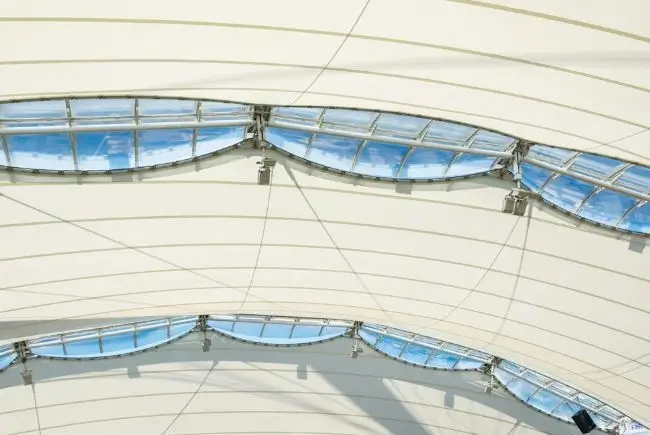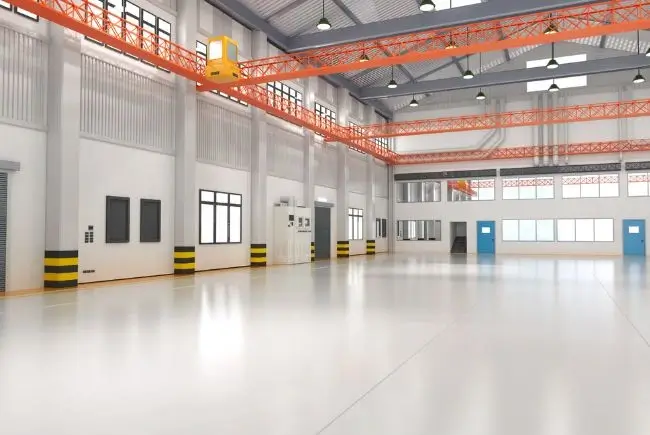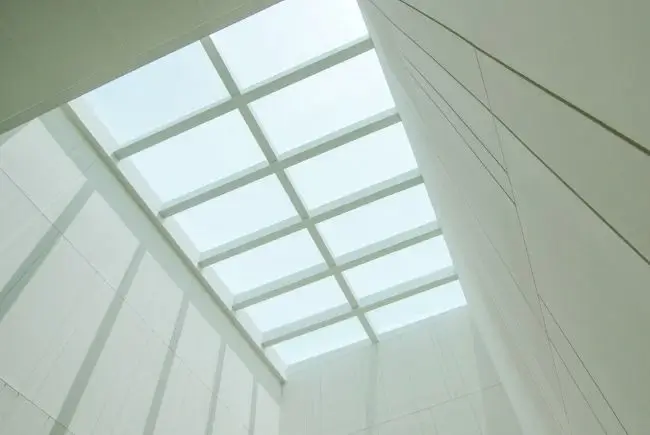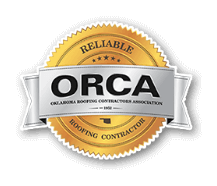Nothing beats the warmth of direct sunlight streaming into a workspace. In Oklahoma City, where there’s ample natural light, businesses have a golden opportunity to create brighter, more inviting interior spaces while cutting energy costs. Incorporating natural light into a building’s design doesn’t just reduce the need for artificial lighting—it also boosts employee productivity and makes customers feel more welcome.
At Maupin Roofing, we know that a well-planned roof plays a huge role in how much sunlight reaches the inside of your building. Whether you’re constructing a new building or upgrading an existing one, we’re here to help you make the most of Oklahoma’s natural daylight.
Building Design: Enhancing Natural Light with Roofing

The right roofing choices can make all the difference in how much natural light enters a commercial space. Oklahoma businesses benefit from plenty of sunlight, but balancing daylight penetration with energy efficiency is key. Here are some roofing materials and features that can help keep spaces bright while preventing heat buildup.
Roofing Materials That Maximize Natural Light
Choosing the right roofing materials is essential for bringing in natural light while managing heat and glare. Here are some options that work well for Oklahoma’s climate:
Cool Roofing Materials

Light-colored or reflective roofing materials, such as TPO (thermoplastic polyolefin) or reflective metal roofing, help bounce natural daylight deeper into a building while reducing heat absorption. This keeps interior spaces bright without excessive heat gain.
Translucent Roofing Panels

Polycarbonate or fiberglass panels allow soft, diffused daylight to enter while still providing insulation. These materials are ideal for warehouses, greenhouses, and large commercial spaces that need consistent lighting without glare.
Standing Seam Metal Roofs with Skylight Integration

Commercial roofing in OKC must be both durable and efficient. Standing seam metal roofs are a popular choice due to their longevity. When paired with skylights or roof domes, they bring in natural daylight without excessive heat gain.
Skylights and Other Light-Enhancing Features

Skylights: Bringing the Outdoors In
Skylights are one of the easiest ways to introduce natural light into a space. They reduce reliance on artificial lighting and add to the overall aesthetic appeal of a building. In Oklahoma’s climate, energy-efficient skylights with tinted or low-emissivity glass help minimize heat gain while maximizing brightness.
Light-Diffusing Roofing Materials

Not all roofing materials block light entirely. Some, like polycarbonate panels or translucent fiberglass, allow soft, diffused light to enter without harsh glare. These materials are especially useful in commercial spaces that require steady, evenly distributed lighting.
Roof Domes for Maximum Daylight

Roof domes function similarly to skylights but provide daylight penetration from multiple angles, spreading natural light across larger interior spaces. They are an excellent choice for showrooms, office buildings, and retail spaces.
Overhangs and Shading Styles

Maximizing natural light is important, but so is preventing overheating. Shading devices, overhangs, and awnings allow light in while reducing glare and heat, helping businesses stay comfortable without increasing cooling costs.
Incorporating Large Windows with Roofing Strategy

Strategically placing large windows alongside skylights and reflective roofing materials helps bring in more natural light while maintaining energy efficiency. This approach makes interior spaces feel open, bright, and welcoming.
Natural Light Solutions for Different Commercial Buildings
The way a building integrates natural light depends on its function, layout, and surroundings. Some spaces require bright, inviting atmospheres to attract customers, while others focus on efficiency and worker productivity. Here’s how different types of commercial properties can prioritize natural light for both aesthetic and functional benefits.
Malls & Retail Spaces: Creating an Inviting Atmosphere
Shopping centers and retail stores thrive on aesthetic appeal and customer comfort. Bright, natural lighting encourages shoppers to stay longer and enhances product visibility.
Best Ways to Integrate Natural Light in Retail Spaces:
Skylights & Roof Domes
Brighten walkways and communal areas, reducing the need for artificial lighting.
Create a more open and spacious feel, improving customer experience.
Help highlight seasonal displays or focal points in a store.
Daylight Harvesting Systems
Automated sensors adjust artificial lighting based on available sunlight.
Reduces electricity costs while maintaining consistent brightness levels.
Ideal for large shopping centers where energy savings add up quickly.
Light Shelves & Window Treatments
Light shelves reflect natural light deeper into a store, reducing shadows.
Adjustable window treatments help control glare without blocking light.
Prevents excessive heat gain, keeping the space comfortable for shoppers.
Bonus Tip: Malls can combine natural light with reflective flooring to further distribute daylight without adding additional fixtures.
Garages & Workshops: Practicality Meets Efficiency
Workshops, auto garages, and industrial service centers need strong, functional lighting for detailed tasks. Natural light improves visibility, safety, and worker productivity, making it a valuable addition to these spaces.
How to Incorporate Natural Light in Garages & Workshops:

Translucent Roofing Panels
Fiberglass or polycarbonate panels allow soft, even daylight without glare.
Maintains consistent lighting throughout the day, even in large work areas.
Helps reduce reliance on fluorescent lighting, lowering energy costs.
High Windows & Clerestory Windows
Placed above work areas, they bring in light without obstructing wall space for tools or storage.
Encourages better air circulation when paired with ventilation systems.
Reduces worker eye strain by providing a natural, diffused light source.
Shading Devices & Overhangs
Helps prevent direct sunlight from creating glare on workstations.
Maintains comfortable indoor temperatures without excessive heat gain.
Adjustable shading options adapt to seasonal changes, optimizing light year-round.
Bonus Tip: Workshops with north-facing windows receive consistent natural light throughout the day with minimal glare.
Factories & Warehouses: Efficiency and Employee Well-Being
Large industrial buildings present unique lighting challenges, as they often lack sufficient windows and rely heavily on artificial lighting. Bringing in natural light improves energy efficiency and promotes worker well-being by creating a healthier workspace.
Smart Ways to Use Natural Light in Industrial Spaces:

Daylight Harvesting Systems
Uses sensors to dim or turn off artificial lights when daylight is sufficient.
Saves substantial energy costs in factories that operate long hours.
Helps reduce eye strain for employees working in high-intensity environments.
Roof Domes & Skylights
Provide even light distribution across large floor areas.
Reduce dependence on overhead fluorescent lighting, lowering energy consumption.
Improve safety and visibility in workspaces, especially for machinery operators.
Surrounding Landscape Considerations
Buildings positioned in open areas receive better natural light flow than those in dense urban zones.
Strategic window and skylight placement maximizes daylight penetration.
Landscaping elements like trees or awnings can help control excess sunlight and prevent overheating.
Bonus Tip: Warehouses can use solar-reflective roofing to reduce heat gain while still bringing in ample natural light through skylights.
Natural Light vs. Artificial Lighting: A Bright Choice for Businesses
While artificial lighting is essential in commercial spaces, natural light offers numerous advantages beyond energy efficiency.

1. Energy Efficiency & Cost Savings
Businesses save on lighting costs by integrating daylight harvesting systems that adjust artificial lights based on available sunlight.
Thoughtfully placed shading devices and light shelves allow sunlight in without causing excess heat buildup.
2. Employee Well-Being & Mental Health
Exposure to natural daylight has been linked to lower stress levels, higher productivity, and better mental health.
Employees with regular sunlight exposure are less likely to experience seasonal affective disorder, a condition that impacts mood and energy levels.
3. Aesthetic & Functional Improvements
Well-lit interior spaces create a more inviting atmosphere for employees and customers.
Smart window treatments help control light levels, reducing glare while still allowing natural brightness indoors.
The Role of Smart Lighting in Modern Buildings
Smart lighting systems help businesses use both natural and artificial light efficiently. Automated controls adjust brightness based on available daylight, reducing energy waste while keeping spaces well-lit.

How Smart Lighting Works
Daylight Sensors—Detect sunlight levels and dim artificial lights when natural light is sufficient.
Motion-Sensing Lights—Turn on or off based on movement, saving energy in low-traffic areas.
Dimming Systems—Adjust brightness throughout the day to create spaces that feel natural and comfortable.
Energy-Efficient LEDs—Use less power while maintaining consistent lighting quality.
By working with the external environment, smart lighting helps bring natural light indoors without relying too much on electricity. These systems also allow businesses to use the sun’s rays effectively, cutting costs while keeping interiors bright and inviting.
Let’s Talk About Your Roof—And Let the Sunshine In!

Oklahoma gets plenty of sunshine, so why not use it to your advantage? A well-lit business isn’t just about substantial energy savings; it’s about creating a space where employees feel good, customers stay longer, and productivity thrives. The right choices, whether it’s skylights, smart roofing materials, or strategic design, make a significant difference.
At Maupin Roofing, we specialize in roofing solutions that help businesses bring in natural light while maintaining energy efficiency. Whether you need skylights, reflective roofing materials, or a full commercial roof upgrade, our team has the experience to get the job done.
Give us a call at 405-703-3843 or send an email to sales@maupinroofing.com, and let’s put that Oklahoma sunshine to work for you!

Types of Asphalt Shingles for Residential Homes
People tend to use asphalt shingles for residential homes because of their affordability and longevity. At Maupin Roofing, we’ve had numerous clients ask about the

Understanding and Resolving Issues with Roof Flashing
Your roof flashing is just as important as your entire roof system. When neglected, it can lead to some serious roofing issues that will require

Harnessing Natural Light for Commercial Spaces
Nothing beats the warmth of direct sunlight streaming into a workspace. In Oklahoma City, where there’s ample natural light, businesses have a golden opportunity to

Seasonal Gutter Cleaning: Year-Round Roof Protection Guide
Seasonal gutter cleaning is just as important as regular home maintenance. Ignoring your gutters means you can end up with a whole lot more than

8 Most Common Causes of Roof Leaks and How to Prevent Them
Unfortunately, the most common causes of roof leaks are not always immediately noticeable, making it hard for homeowners to know whether they’re actually dealing with

Clay Tile Roofing for Homes: Everything You Need to Know
Interested in clay tile roofing for homes? There are a few things you should know about it, and Maupin Roofing is here to lay everything








